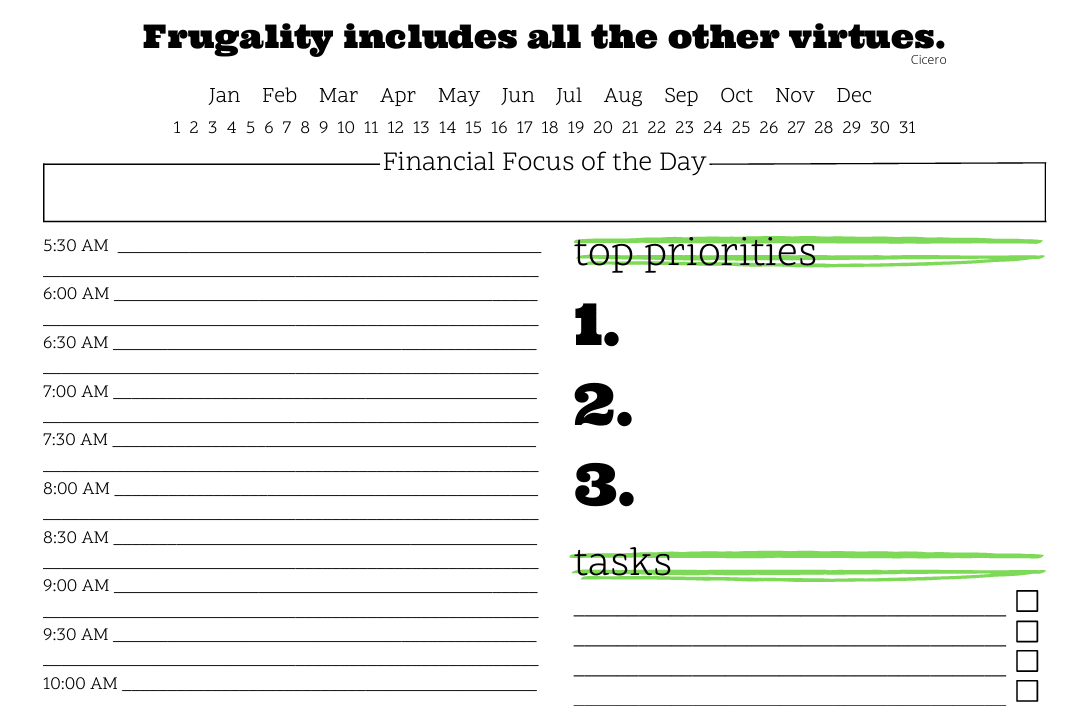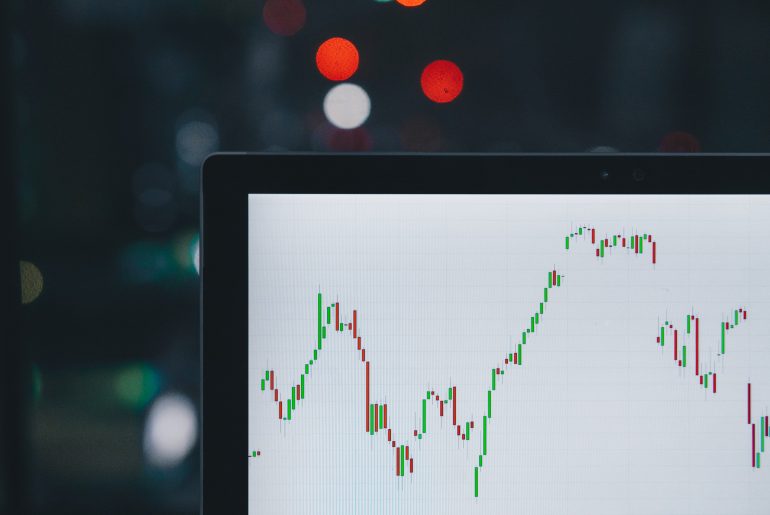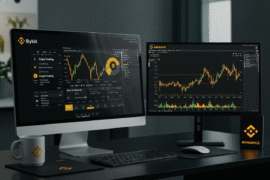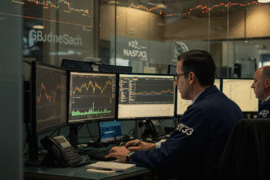This article may contain references to products or services from one or more of our advertisers or partners. We may receive compensation when you click on links to those products or services. Nonetheless, our opinions are our own.
The information presented in this article is accurate to the best of our knowledge at the time of publication. However, information is subject to change, and no guarantees are made about the continued accuracy or completeness of this content after its publication date.

Updated by Albert Fang
Trading in any market is incredibly challenging, as proven by the fact that the majority of new traders lose money. However, with enough knowledge, experience, and practice, success isn’t an unattainable dream. And Forex trading is no exception. In this article, we will discuss the basics of Forex trading. So, if you wonder “How Does Forex Work?” or “What is fundamental analysis?”, keep reading.
What Is Forex Trading?
Forex trading implies that a trader buys one currency and sells another, with the exchange rate constantly fluctuating according to supply and demand. If you are into alternative investing, you may even consider the best Metal trading platform.
The foreign exchange market is a worldwide marketplace where currencies are traded 24 hours a day, Monday through Friday. There is no physical exchange; hence all currency trading is done over the counter (OTC). A global network of banks and other financial institutions oversees the market.
How Are Currencies Traded?
All currencies are given a three-letter code, similar to the ticker symbol of a stock. While there are more than 170 currencies globally, the US dollar is used in the vast majority of Forex transactions; therefore, knowing its code – USD – is extremely useful. The euro, which is accepted in 19 European Union countries, is the next popular currency in the Forex market (code: EUR).
Every Forex transaction is expressed as a combination of the two currencies being traded. This ‘currency pair’ comprises a base currency and a quote currency, with the base currency being sold to buy the quote currency. The price of a pair is the amount of quote currency required to purchase one unit of the base currency. By properly predicting the price movement of a currency pair, you can profit.
The following seven currency pairs, collectively known as the majors, account for over 75% of all forex trading:
- AUD/USD
- EUR/USD
- USD/CAD
- USD/CHF
- USD/JPY
- NZD/USD
- GBP/USD
Some Important Basics
Technical and fundamental and analysis are the major methods that traders employ to predict market moves and enter live positions in forex markets. A Forex trader’s trading style will usually be determined by a combination of these factors, depending on their personality.
Fundamental Analysis
The main objective of fundamental analysis and the research entailed by it is to understand why prices fluctuate. Fundamental traders don’t try to anticipate future trends based on previous ones. They look at every aspect of the currency and figure out what makes it move and why!
Fundamental analysis is concerned with determining the intrinsic value of a currency. We’ll look at some of the most important fundamental aspects that affect a currency’s movement.
Economic Indicators
Economic indicators are reports that the government or a private entity provides detailing a country’s economic performance. They are the tools that are used to assess a country’s economic health.
These reports are produced regularly and provide market participants with information on whether a country’s economy has improved or deteriorated. Any deviation from the usual in forex can result in high price and volume swings.
Gross Domestic Product (GDP)
The total market value of all products and services produced in a country over a given year is represented by GDP. Most traders concentrate on the advance and preliminary reports, which are released in the months leading up to the final GDP figures. Significant changes between these reports can result in a lot of volatility.
In addition to the factors mentioned above, a fundamental Forex trader will look at the country’s inflation, trade balance, employment growth, and even the central bank’s benchmark interest rate. Many Forex trading experts refer to this form of analysis as the “foundation of solid reason trading.” Many professional investors use fundamental analysis in their trading techniques.
Technical Analysis
Technical analysis means identifying patterns on a price chart. Triangles, flags, and double bottoms are examples of price patterns that technical traders look for. A trader will determine the entry and exit locations based on the pattern. Technical traders, unlike fundamental traders, are less interested in why something is moving because the charts’ trends and patterns are their signals.
The following are the three most common trading charts:
- Candlestick chart
- Bar chart
- Line chart
A technical Forex trader will evaluate the price movement, trend, support, and resistance levels on a chart. When evaluating foreign exchange markets, traders also utilize indicators and oscillators added to a price chart. Technical traders embrace indicators because they are simple to use and produce clear signals.
Conclusion
Forex trading is not a quick process. It takes time to get to know the markets, and there’s a lot of new vocabulary to learn. Every forex trader has their own style and strategy. Learn and explore these in-depth to see if this style of analysis is right for you.
A good initial step is to educate yourself on the market’s fluctuations by using a demo account, which allows a newbie trader to execute positions and manage their risk using fictitious money in a virtual environment.

Reviewed and edited by Albert Fang.
See a typo or want to suggest an edit/revision to the content? Use the contact us form to provide feedback.
At FangWallet, we value editorial integrity and open collaboration in curating quality content for readers to enjoy. Much appreciated for the assist.
Did you like our article and find it insightful? We encourage sharing the article link with family and friends to benefit as well - better yet, sharing on social media. Thank you for the support! 🍉
Article Title: The Basics of Forex Trading
https://fangwallet.com/2021/11/29/the-basics-of-forex-trading/The FangWallet Promise
FangWallet is an editorially independent resource - founded on breaking down challenging financial concepts for anyone to understand since 2014. While we adhere to editorial integrity, note that this post may contain references to products from our partners.
The FangWallet promise is always to have your best interest in mind and be transparent and honest about the financial picture.
Become an Insider

Subscribe to get a free daily budget planner printable to help get your money on track!
Make passive money the right way. No spam.
Editorial Disclaimer: The editorial content on this page is not provided by any of the companies mentioned. The opinions expressed here are the author's alone.
The content of this website is for informational purposes only and does not represent investment advice, or an offer or solicitation to buy or sell any security, investment, or product. Investors are encouraged to do their own due diligence, and, if necessary, consult professional advising before making any investment decisions. Investing involves a high degree of risk, and financial losses may occur including the potential loss of principal.
Source Citation References:
+ Inspo












































